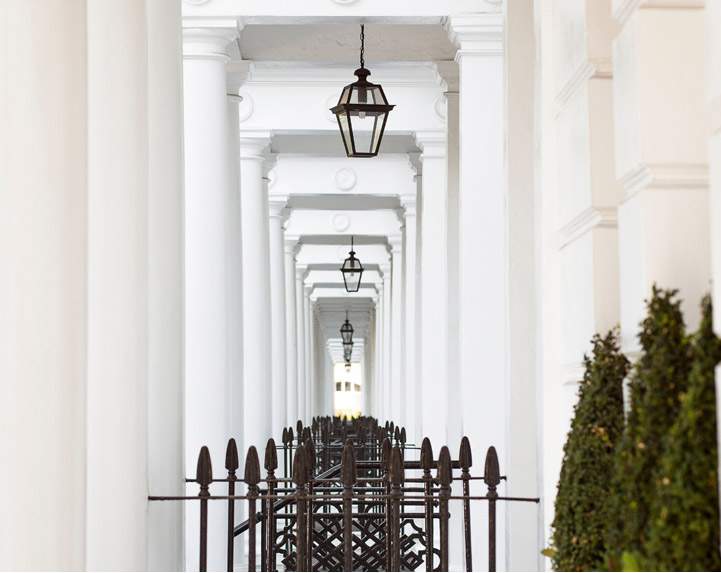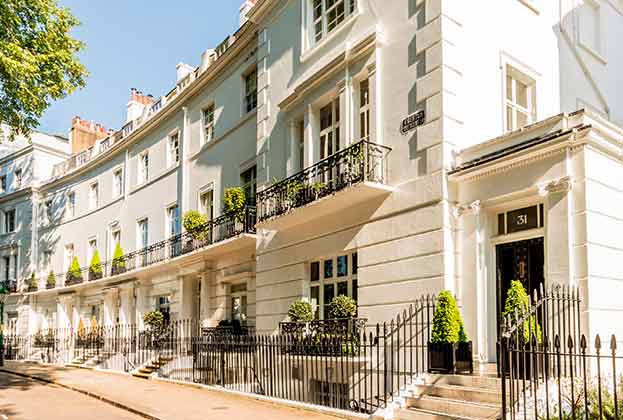Activity in London’s £5 million-plus property in Q3 of 2020 indicates that when travel restrictions ease, the prime central London market is still set for recovery
The prime central London market has faced a series of political and economic headwinds in recent years. All have contrived to put pressure on prices. Then came Covid-19.
Here, we examine the historical and global factors that have defined the market, the conditions that are turning the tide, and what the recovery could look like.
A market ready for recovery…
In the first three months of 2020 before the Covid-19 pandemic hit the UK, prices in the prime central London property market rose by 0.9%. It wasn’t much, but it was the first quarter of price growth seen in four and a half years.
The market looked like it was primed to shake off the combined effects of a sustained tax assault and a bout of prolonged political uncertainty. While concerns over Brexit remained, the possibility of a political swing to the left had receded and the effect of a series of tax changes looked to have been fully priced into the market.
Prior to the pandemic, the market looked poised for recovery
Lucian Cook, Head of Residential Research
Properties looked good value. Though price adjustments of more than 20% had happened over a much longer period, they had fallen to a similar degree in both the late 1980s, early 1990s and – most abruptly of all – as a result of the global financial crisis (GFC). And with sterling at $1.24, there was the kind of currency play on offer that had historically kick-started a recovery.
The costs of buying a property in London were set to rise a little further because of a looming 2% non-resident buyers’ stamp duty surcharge. But the total buy-hold-sell costs of prime residential real estate in the UK’s capital were competitive with those of other world cities – as were prices. And finally, despite uncertainties of trade deals and trade wars, global wealth had been rising.
…put on hold by Covid-19
And then came Covid-19. The pandemic prompted sharp falls in global stock markets and commodity prices, quickly depleting the wealth reserves of the global elite. Almost overnight, central London lost its buzz, meaning the imperative to have a base here was lost. Travel restrictions curtailed international demand while domestic demand was held back by an inability to view properties in person.
Activity levels fell dramatically – by 60% in April according to data for the £1 million+ market in central London from LonRes – much as they did across the housing market as a whole. But while the price gains made in the briefest of Boris bounces unwound, there were no further substantial falls in prices, as the market was essentially put into suspended animation.
A shift in buyer focus
Since the housing market reopened, activity at the top end has generally picked up substantial momentum across the country.
The experience of the first lockdown unleashed a wave of demand from those looking for more space along London’s wealth corridors and through the commuter zone.
It has also prompted many to re-evaluate their lifestyle, meaning the appeal of country living has been rediscovered. That has prompted a long-awaited resurgence in the country house market, partially on the back of demand displaced from central London because of the nature of events.
As a result, each week between the beginning of June and the end of October, an average of 892 sales of property worth at least £1 million were agreed across the UK as a whole (according to data from TwentyCi). That figure is 72% higher than for the same period last year.

Unusually late to the party
Correspondingly, the total number of sales of £1 million+ agreed in the first 10 months of the year have been 25% above those in 2019, despite an absence of activity during the months of the first lockdown. But the same data suggests that in the year to date, £1 million+ sales across Westminster, Kensington & Chelsea and Camden have been 5% lower than the same period last year.
Given the distinct dynamics of the central London market, there has not been quite the same urgency to buy. But there has remained a core of underlying demand.
Savills buyer registrations in central London have been lower than in the 10 weeks prior to the pandemic. Yet since the beginning of June, they have recovered to average 83% of those levels.
The constraints of international travel mean that demand from non-resident international buyers has become increasingly focused on off-plan purchases of investment properties. But there has been strong demand for houses with access to a private garden, particularly from buyers for whom central London is their main place of residence.
But encouraging signs
Confidence can also be taken from a surge in £5 million+ transactions in the third quarter of the year. Some 95 purchases of such properties (17% higher than the quarterly average of the past four years) with a total spend of £876 million are testament to the underlying appeal of central London property to the world’s ultra-high net worth community. The spending power of this group has been partially restored by a rebound in stock and commodity prices.
During October, the oil price was back at $40 per barrel, having fallen to less than $20 (albeit 23% short of its 2015-2019 average). Similarly, the FTSE 100 and Hang Seng were within 23% and 15% of their 2019 peak, while the Dow Jones and the Nikkei were both within 5% of that pre-Covid-19 benchmark.
This has been supplemented by continued wealth generation from both the technology and life sciences sectors, where levels of private equity and venture capital funding have continued unabated.
So in their recent Billionaires Insights 2020 ‘Riding the Storm’ report, UBS and PwC recently reported that global billionaire wealth hit a new high of £10.2 trillion at the end of July, as the ‘innovators and disrupters’ within this group have built on their wealth despite the pandemic.
‘When’ and not ‘if’
All of the above means we continue to believe that a recovery in the prime central London market remains a case of ‘when’ and not ‘if’.
The timing of such a recovery is primarily dependent on the roll-out of an effective Covid-19 vaccine and a corresponding relaxation of travel restrictions. That should allow central London to restore its credentials as a location of choice for the world’s wealthy and, by giving them the opportunity to enjoy the amenities it offers, provide the impetus to kick-start its housing market.
Potentially effective vaccines suggest light at the end of the tunnel
Lucian Cook, Head of Residential Research
Despite a second lockdown, the news of several potentially effective vaccines suggests there is light at the end of the tunnel. However, it remains to be seen whether it will come early enough to support activity prior to the end of the stamp duty holiday and imposition of a further 2% non-resident surcharge.
The changed tax landscape in the UK is one reason why we believe prime central London’s recovery will be less dramatic than it has been in the past.
In the five years after the downturn of the late 1980s and early 1990s, the value of London’s most expensive residential real estate rose by 98%. In the five years after the credit crunch, prices rose by 79%. But the former occurred during London’s elevation on the world stage as a destination for global wealth, and the latter occurred in the age of the global financial stimulus.
Now, London has arguably reached maturity as a world city. This, together with a tighter focus on the provenance of wealth and a less generous tax environment, points to a slower pace of recovery – when it comes – however overdue it seems and however much central London residential real estate looks good value, as it undoubtedly now does.
Read the other articles within In focus: prime central London below
.jpg)
.jpg)
